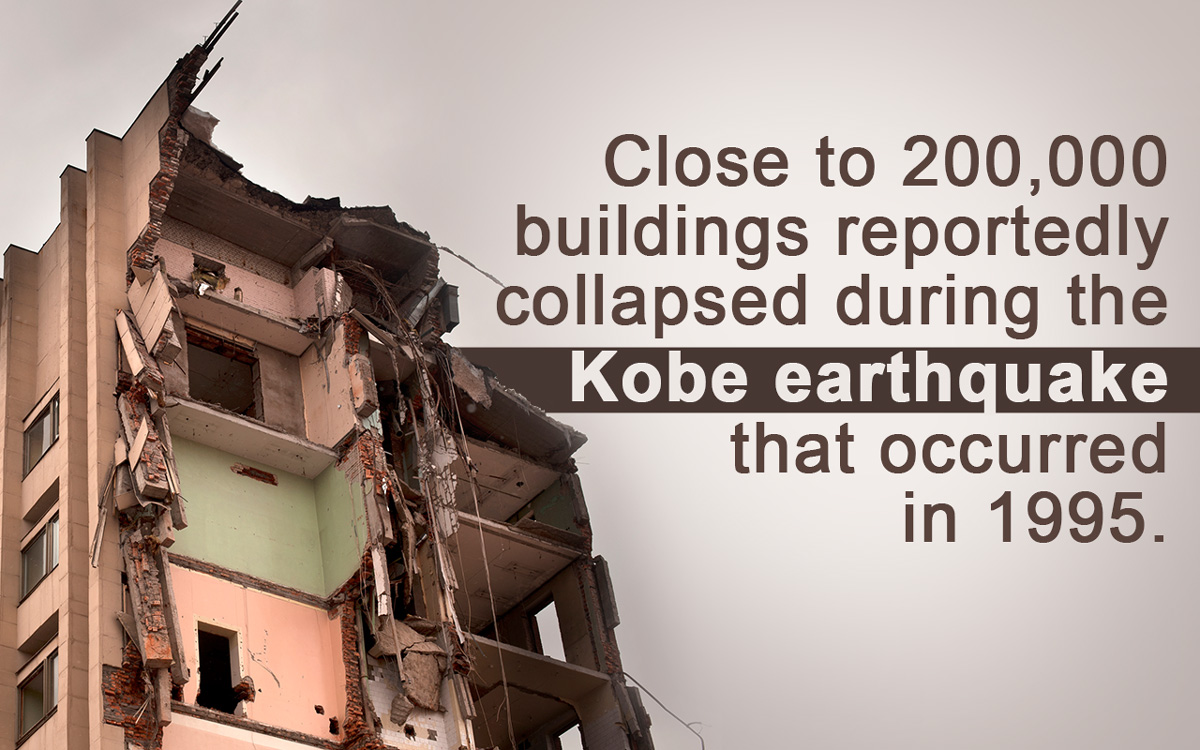
Even though the effects of Kobe earthquake were not as intense as that of the Great Kanto earthquake (1923), there was a lot for the mankind to learn from this natural disaster. Continue reading for more information on this earthquake, with emphasis on its aftermaths.
The Kobe earthquake, which shook the island nation of Japan on 17th January, 1995, is considered to be the second most disastrous earthquake that the country witnessed in the 20th century. Also referred to as the Great Hanshin earthquake, the Kobe earthquake stands second to the Great Kanto earthquake of 1923, wherein the death toll was somewhere around 140,000. It occurred at 05:46 JMT, on 17th January, 1995, measured Mj7.3 on the JMA magnitude scale (i.e. 6.8 on the USGS movement magnitude scale.).
It was preceded by four foreshocks on the previous day, and followed by numerous aftershocks in the weeks to come. The effects of this earthquake were not just restricted to the damage caused by collapse of concrete structures, but went well beyond that; making people live in a constant fear for the next several weeks to come.
Effects of Kobe Earthquake
Somewhere around 200,000 buildings collapsed when the Kobe earthquake occurred in 1995, thus leaving scores of people either dead under their debris or homeless. Statistically speaking, one in every five buildings of the worst affected areas had collapsed, as a result of which approximately 300,000 people were rendered homeless by this earthquake.
Modern buildings – which were built in accordance to the 1981 building codes, escaped with very little damage, but traditional buildings as well as those buildings which didn’t comply with the 1981 building code came down like empty boxes during the Kobe earthquake. Buildings were not the only structures to be destroyed though. Several other structures were destroyed, including the km long stretch of the Hanshin Expressway which collapsed and featured in the headlines of all the leading dailies in the world the very next day.
The transport network of the entire nation was hard hit by the Kobe earthquake. Several expressways – including the severely damaged Hanshin Expressway, were closed as they were rendered unusable as a result of the damage caused to them. Similarly, the rail lines – like the Shinkansen high-speed rail line (aka bullet train), were brought to a complete halt as a result of the damage caused to them.
Infrastructural collapse also brought most of the medical facilities in the region to a complete standstill, while disruption of the electricity supply and damaged roads and rail lines made rescue work all the more difficult. Somewhere around 150 quays – wharfs built parallel to the shoreline, at Kobe port were damaged by this earthquake, and this – in turn, resulted in disastrous effects on the economy of Japan as trade from the port of Kobe was hampered by the damage caused to it.
Kobe Earthquake Economic Effects
The effects of the Great Hanshin earthquake were also seen on the Japanese economy with several industries being forced to shut down, transport (including the trade of goods from the port of Kobe) coming to a standstill, several commercial complexes being razed to dust,….. and so on. In terms of money, Japan lost ten trillion yen – which amounted to US$102.5 billion, to this earthquake. As this amount constituted to 2.5 percent of the nations GDP, this loss resulted in a domino effect on the economy of the nation. The repercussions of this tremor were also seen on the Japanese stock markets; Nikkei came down by a whopping thousand points on the very next day.
More importantly, the fact that Kobe earthquake has been listed as ‘the costliest natural disaster to befall any single country’ speaks volumes about the damage this earthquake caused to the Japanese economy.
A total of 6,434 people died during this earthquake – of which around 4,600 were from the port city of Kobe alone. That was a huge loss of life considering that an earthquake of the same magnitude had left only around 70 people dead in San Fernando Valley of Los Angeles – which roughly had the same population as the city of Kobe, on 17th January, 1994. Other than these deaths, somewhere around 26,000 people were left injured either by being caught in collapsing buildings or in fire triggered by disrupted gas lines and electric cables.
Its effects on people who survived were more of psychological, with thousands of individuals just refusing to return home as aftershocks continued to rock the island nation for the next several days to come. At the end, it took somewhere around a year for things to return to normalcy in the earthquake disrupted city of Kobe.
